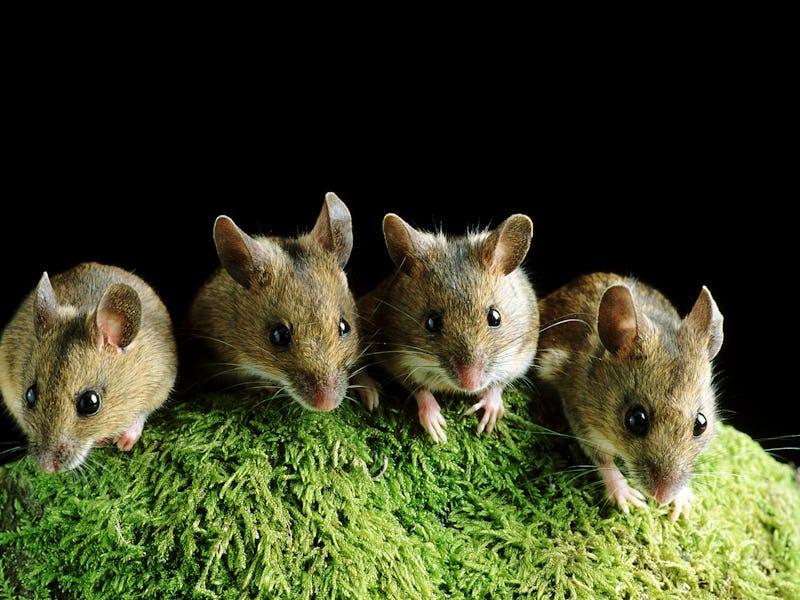Scientists used a unique method to produce mice from unfertilized eggs
The researchers hope it could have future applications for fertility treatment.

In 1995, a boy made medical history when scientists learned he was partly the product of parthenogenesis — a process that occurs when an offspring results from an unfertilized egg.
More than two decades after the discovery, scientists are still figuring out how parthenogenesis works, but a new study takes one big step forward to answering that question, finding further proof that parthenogenesis can occur in mammals, at least under laboratory conditions.
The latest research looks at parthenogenesis in mice offspring, using a unique genetic technique to overcome challenges found in previous research. The findings were recently published in the journal Proceedings of the National Academy of Sciences.
A mouse — produced via parthenogenesis — and her offspring.
What’s new — Researchers used what’s called epigenetic rewriting techniques — a method that does not change the actual DNA in an animal but rather alters gene expression and activity — to create unfertilized parthenogenetic embryos without male sperm.
After transferring the embryos to female mice, the scientists were able to bring one parthenogenetic mouse to adulthood, which then successfully reproduced — with a male — to create viable offspring. Further experiments brought an additional two live mice offspring, which survived to adulthood as well.
Why it matters — Parthenogenesis challenges one of the fundamental tenets of sexual reproduction — that is, you need genetic data from both a father’s sperm and a mother’s eggs to produce offspring.
Yet it’s no scientific secret that other animals that normally sexually reproduce can occasionally, asexually produce offspring from parthenogenesis. Sharks, snakes, and even California condors are some of the species that scientists have observed reproducing without sperm from a male.
Scientists have yet to observe parthenogenesis in wild mammals, though previous research published in 2004 found parthenogenetic lab mice could survive to adulthood. More research will be needed to understand if parthenogenesis will ever be possible in humans.
This latest study builds upon prior research, finding a novel genetic way to generate parthenogenetic mammals. Their research supports the parental conflict hypothesis, also known as the “Haig” hypothesis, which finds that conflict between maternal and paternal embryonic genes results in the differential expression of genes depending on whether they come from sperm or an egg. This differential expression, known as “gene imprinting,” typically has made parthenogenesis difficult to generate in mammals — until now.
How they made the discovery — Researchers used a technique called methylation rewriting, which tweaks gene expression without altering the DNA itself. Methylation refers to the process of adding or removing chemical groups — known as methyl groups — at specific locations on DNA called loci.
Effectively, the scientists used this technique to rewrite seven imprinting control regions in immature eggs known as oocytes. Imprinting control regions play a key role in the expression of imprinted genes that derive from either the mother or the father.
The researchers successfully used methylation rewriting to activate the oocytes — a process that normally occurs during sperm fertilization of the egg — to create parthenogenetic embryos, which were then transferred to host mothers, who gave birth to the offspring. This was all without a single male sperm. The researchers compared the development of the parthenogenetic animals to a control group of mice.
What’s next — The researchers are quick to note that their procedure for generating parthenogenetic mammals isn’t extremely effective. After all, only one offspring — out of hundreds of parthenogenetic embryos the researchers created — successfully survived to adulthood. Further investigation will help clarify why more weren’t successful and how to successfully edit mammal parthenogenetic embryos to better ensure their survival.
The researchers also hope their results can provide another stepping stone in medical research on parthenogenesis, which has applications for infertility treatments and regenerative medicine.
“The success of parthenogenesis in mammals opens many opportunities in agriculture, research, and medicine,” the researchers conclude.